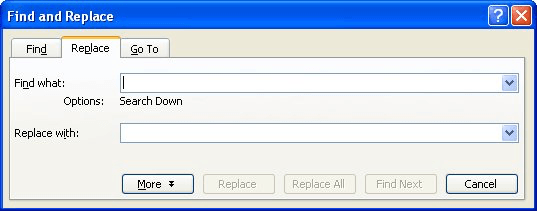Please Note: This article is written for users of the following Microsoft Word versions: 97, 2000, 2002, and 2003. If you are using a later version (Word 2007 or later), this tip may not work for you. For a version of this tip written specifically for later versions of Word, click here: Changing the Formatting of All Instances of a Word.
Written by Allen Wyatt (last updated December 31, 2022)
This tip applies to Word 97, 2000, 2002, and 2003
If you are developing a document that will be used to instruct a reader how to use a program, you can make the document more functional by using color. For instance, you could make every occurrence of a given word red or blue. This would help draw the user's eye to that area of the document.
As an example, suppose you had a special warning paragraph as a design element in your document. Every one of these paragraphs starts with the word Warning! (with the exclamation mark), and you wanted this word to be in red. You can use Word to quickly search for all occurrences of the word and change its color. To do this, follow these steps:

Figure 1. The Replace tab of the Find and Replace dialog box.
If you don't have a color printer, color words will do you little good when you print a document. You could achieve close to the same effect, however, by changing all occurrences of a certain word to a special format that will be noticeable on your printout.
For instance, let's assume you have a special warning paragraph as a design element in your document. Every one of these paragraphs starts with the word Warning! (with the exclamation mark), and you want this word to be in bold italics. You can use Word to quickly search for all occurrences of the word and change its formatting. To do this, follow these steps:
This will result in all occurrences of Warning! being formatted as bold and italic.
WordTips is your source for cost-effective Microsoft Word training. (Microsoft Word is the most popular word processing software in the world.) This tip (257) applies to Microsoft Word 97, 2000, 2002, and 2003. You can find a version of this tip for the ribbon interface of Word (Word 2007 and later) here: Changing the Formatting of All Instances of a Word.

Do More in Less Time! Are you ready to harness the full power of Word 2013 to create professional documents? In this comprehensive guide you'll learn the skills and techniques for efficiently building the documents you need for your professional and your personal life. Check out Word 2013 In Depth today!
When you need to change the font size of a text selection, using the shortcut described in this tip is a great technique. ...
Discover MoreWord provides a wide assortment of underlines that you can apply to your text. If the assortment isn't wide enough for ...
Discover MoreWant a cool shortcut to make your text bold? Here's a method that fits in wonderfully with how things are done in the ...
Discover MoreFREE SERVICE: Get tips like this every week in WordTips, a free productivity newsletter. Enter your address and click "Subscribe."
There are currently no comments for this tip. (Be the first to leave your comment—just use the simple form above!)
Got a version of Word that uses the menu interface (Word 97, Word 2000, Word 2002, or Word 2003)? This site is for you! If you use a later version of Word, visit our WordTips site focusing on the ribbon interface.
Visit the WordTips channel on YouTube
FREE SERVICE: Get tips like this every week in WordTips, a free productivity newsletter. Enter your address and click "Subscribe."
Copyright © 2024 Sharon Parq Associates, Inc.
Comments